What Is Zero Force Member?
Important Point
In a truss system, some members are not carrying any force. This called a zero-force member.
This member may be added to increase truss stability. Identifying these members will simplify the process of analyzing truss.
What Is Zero Force Member for Truss?
Truss analysis using the method of joints is greatly simplified if one is able to first determine those members that support no loading.
These zero force members may be necessary for the stability of the truss during construction and to provide support if the applied loading is changed.
The zero-force members of a truss can generally be determined by inspection of the joints, and they occur in two cases.
Case – 1.
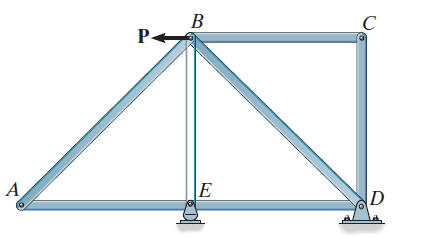
Consider the truss in above Fig -1 (Truss). The two members at joint “C” are connected together at a right angle and there is no external load on the joint.
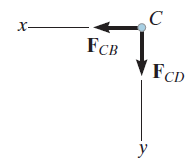
The free-body diagram of joint “C”, Fig – 2 (Truss Joint), indicates that the force in each member must be zero in order to maintain equilibrium.

Furthermore, as in the case of joint “A”, Fig – 3 (Truss Joint) this must be true regardless of the angle say θ. between the members.
Case – 2.
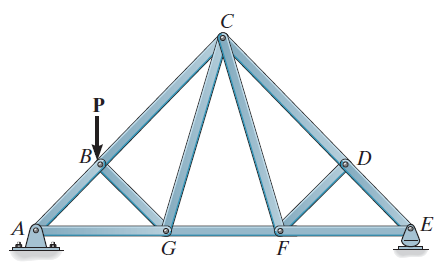
Zero-force members also occur at joints having a geometry as joint “D” in above fig -4 (Truss).
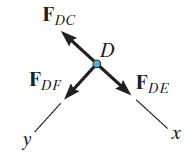
Here no external load acts on the joint, so that a force summation in the y-direction, Fig – 5 (Truss Joint), which is perpendicular to the two collinear members, requires that FDF = 0.
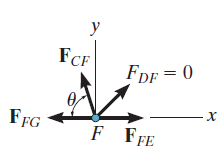
Using this result. “FC” is also a zero-force member, as indicated by the force analysis of joint “F”, Fig – 6 (Truss Joint).
Also, read: One Way Slab and Two Way Slab Design Step by Step
Summary of Zero Force Member for Truss,
Then, if only two non-collinear members form a truss joint and no external load or support reaction is applied to the joint, the members must be zero-force members, Case 1.
Also, if three members form a truss joint for which two of the members are collinear, the third member is a zero-force member, provided no external force or support reaction is applied to the joint, Case 2.
Particular attention should be directed to these conditions of joint geometry and loading. since the analysis of a truss can be considerably simplified by first spotting the zero-force members.
Useful Article for You
- Zero Force Members
- How Much Does a Yard of Concrete Weigh
- Cmu Wall Meaning
- Skeleton Steel Framing
- Gradient Road
- Budget Sunroom Ideas
- What Is Gypsum Board
- Types of Vaulted Ceilings
- How Does Baking Soda Remove Blood from Carpet
- What Are Forms in Construction
- How Heavy Is Dirt
- Tender Meaning in Architecture
- Dark Olive Green House
- Cast in Place Concrete
- Lean to Roof
- How Tall Is an Average Door
- Grade Beam Foundation
- Window Sill Height
- Concrete Cold Joint
- Types of Traps
- Types of Pipe
- Wood Supporting Beams
- Finishing Plaster
- Home Depot Scrap Wood
- Lvl Beam Size Calculator
- Structural Shell
- Curb Types
- Msand
- Optimum Dry Meaning
- Disadvantages of Low-E Glass
- Bridge Abutment Definition
- Build Materials List
- Composite Masonry Wall
- Is Cedar a Hardwood or Softwood
- Modified Proctor Test
- Physical Properties of Sand
- Crane Machine Construction
- Types of Gable Roofs
- Door Frame Types
- How Much Does 55 Gallons of Oil Weigh
- Dog Leg Stairs
- Concrete Salt Finish
- Westpoint Bridge Builders
- Types of Porches
- Hempcrete Disadvantages
- Roof Pitch Types
- Types of Weirs
- Asphalt Floor
- Dutch Roof
- #6 Rebar Weight Per Foot
- Prizmatic Compass
- Bond Break Concrete
- Poured Concrete Wall Cost Calculator
- How Many 60 Lb Bags of Concrete in a Yard
- Wood Fence Post Spacing Chart
- Falsework
- Design of Building Structures
- Topping Slab
- Types of Cinder Blocks
- Fresh Concrete
- Door Colors for Red Brick House
- Clear Cover Concrete
- Tiles Brand
- Cement Consumption in Plaster
- Weight of Concrete Slab Calculator
- Is Clay Smaller Than Silt
- How to Calculate Dead Load
- Bad Concrete Work
- Stepped Foundations
- Residential Construction Cost Estimator Excel
- Different Construction Trucks
- Septic Pump Replacement Cost
- Dead Load Calculator
- Beam Vs Column
- Concrete Mix Ratio
- Caisson Foundation
- Glulam Beam Weight Calculator
- Bituminous Pavement
- M30 Mix Ratio
- Is 2502
- Reinforced Brick Work
- Plinth Level
- Trapezoidal Footing Formula
- Slab Steel Calculation
- Rolling Margin of Steel
- Top 20 Pvc Pipe Brands in India
- Top 5 Cement in India
- How Much Weight Can a 6×6 Support Horizontally
- Modulus of Rupture Formula
- Types of Curtains
- Building Estimate Excel Sheet
- How Is the Skeleton Similar to the Frame of a House?
- Which of the Following Best Explains Why Buildings Tip During Earthquakes?
- Rate Analysis of Civil Works
- Water Tank Company Name
- 1 Soot in Mm
- Reinforcement Lap Length Table
- Well Point
- Plastering Ratio
- Rcc Value Day
- How Many Brick in a Cube
- Dubai Construction Company
- Steel Metal Price Per Kg
- Bathroom Fittings Company
- Coarse Sand Density
- Symbol for First Angle Projection
- Control Lines Construction
- Steam Roller Weight
How to Identification of Zero Force Members in Truss?
Because trusses are usually designed to support several different loading conditions, it is not uncommon to find members with zero forces in them when a truss is being analyzed for a particular loading condition.
Zero-force members are also added to trusses to brace compression members against buckling and slender tension members against vibrating.
The analysis of trusses can be expedited if we can identify the zero-force members by inspection.
Two common types of member arrangements that result in zero-force members are the following:
Step – 1. Noncollinear Members
If only two noncollinear members are connected to a joint that has no external loads or reactions applied to it, then the force in both members is zero.
Step – 2. Collinear Member
If three members, two of which are collinear, are connected to a joint that has no external loads or reactions applied to it, then the force in the member that is not collinear is zero.
Zero Force Members
In the field of engineering mechanics, a zero force member is a member (a single truss segment) in a truss which, given a specific load, is at rest: neither in tension, nor in compression.
Zero Force Members in a Loaded Truss
If three members form a truss joint for which two of the members are collinear and there is no external load or reaction at that joint, then the third non-collinear member is a zero force member, e.g., DA. Find: The forces in each member of the truss.
What Are Zero-Force Members in a Truss?
Zero-Force Members: structural members that support No loading but aid in the stability of the truss. Two-Force Members: structural members that are: a) subject to no applied or reaction moments, and b) are loaded only at 2 pin joints along the member.
Can Truss Members Carry Zero Force?
Sometimes a truss will contain one or more zero-force members. As the name implies, zero-force members carry no force and thus support no load. Zero-force members will be found when you apply equilibrium equations to the joints, but you can save some work if you can spot and eliminate them before you begin.
Do Two Force Members Become Zero-Force Members in Trusses?
There are two rules that may be used to find zero-force members in a truss. These are described below and illustrated in Figure 3.3. At a TWO-member joint: If those members are NOT parallel AND there are no other external loads (or reactions) at the joint then both of those members are zero force members.
Why Are There Zero-Force Members in Trusses?
Zero force members are used to increase stability and rigidity of the truss and to support various loading conditions.
Why Do Some Members in a Truss Carry No Load?
These special types of members called zero-force members ensure the truss stays in a particular shape as a rigid body, but carries no load. Zero-force members are members that you can tell just by inspection that they carry no load. They are important to the structure to ensure it stays in a rigid shape.
Can a Truss Have Multi Force Members?
A frame is a multi-part, rigid, stationary structure primarily designed to support some type of load. A frame contains at least one multi-force member, which a truss never has.
How Do You Find the Force Members of a Truss?
- Always Start by calculating reactions at supports.
- Pick a point with a known force and look at it in isolation.
- Use vector geometry and the sum of forces = 0 to solve the other member forces.
- Repeat the process until all members are solved.
- Remember to look out for Zero Members.
What Is Zero Member in a Truss MCQ?
Rule for zero member force: At a joint, if three members are meeting, two members are collinear (same line), then force in the third member is always zero (if there is no external load at that joint).
Can You Remove Zero Force Members in a Truss?
To find the zero force members of a truss or any system you need to prepare a free body diagram of the system. In theory if you remove a zero force member the system will continue to remain stable, but you will remove redundancy.
Which of the Following Are 0 Force Members from Above?
So the zero force members are AD, DC and EB. At a two member joint, if the members are not parallel and there are no other external loads (or reactions) at the joint then both of those members are zero force members.
Why Is Truss Called Two Force Member?
In engineering, a truss is a structure that “consists of two-force members only, where the members are organized so that the assemblage as a whole behaves as a single object”. A “two-force member” is a structural component where force is applied to only two points.
Why There Is No Moment in Truss?
As all members in an ideal truss are pin-connected (meaning the nodes cannot support any moments) the members themselves can only be loaded in compression or tension, not shear. Thus, they do not experience any moment either.
What Is the Role of Zero-Force Members Can They Be Removed Without Compromising Structural Integrity?
Zero-force members are members that do not experience either compressive or tensile forces. These members may be removed without reducing the structural integrity of the truss. One way to determine which members are zero-force members is to look for a joint which connects three members.
What Does It Mean When the Sum of Forces Is Zero?
The summation of forces will be equal to zero when no resultant forces are acting on a body or when its acceleration is zero and it carries constant velocity.
How Do Trusses Carry Loads?
Trusses are, normally, designed to carry axial forces in its members, which are either tension or compression or reversible tension/compression depending on the worst cases of loading and load combinations. Truss members are connected at joints using welds or bolts.
How Are Loads Transferred in a Truss?
A single-span truss bridge is like a simply supported beam because it carries vertical loads by bending. Bending leads to compression in the top chords (or horizontal members), tension in the bottom chords, and either tension or compression in the vertical and diagonal members, depending on their orientation.
What Are Loads Acting on Truss Member?
Two categories of loads on trusses can be distinguished: dead load and life load. Dead loads for roof structures are basically the own weight of the materials used. These forces act vertically.
How Do I Know If a Truss Is Load Bearing?
If the wall in question is parallel to the joists/trusses, it will likely not be load-bearing. An example of a non-load bearing partition wall can be seen on the left. When joists/trusses are perpendicular to the wall and bear on the top of the wall, that wall is bearing wall.
Can a 2 Force Member Have a Moment?
A two-force member is a body that has forces (and only forces, no moments) acting on it in only two locations. In order to have a two-force member in static equilibrium, the net force at each location must be equal, opposite, and collinear.
Can You Have Zero Net Force?
When an object is in equilibrium (either at rest or moving with constant velocity), the net force acting on it zero.
Zero Force Member in Truss
In structural engineering and truss analysis, a zero force member refers to a member within a truss that carries no load and remains in a state of zero stress when the truss is subject to external loads. These members play an important role in truss stability and can often be identified by visual inspection or by analyzing the equilibrium of forces in the truss.
Zero Force Member
In the field of engineering mechanics, a zero force member is a member in a truss which, given a specific load, is at rest: neither in tension, nor in compression.
How to Identify Zero Force Members?
If a joint has only two non-collinear members and there is no external load or support reaction at that joint, then those two members are zero-force members.
Truss Members
Truss members are made up of all equivalent equilateral triangles. The minimum composition is two regular tetrahedrons along with an octahedron. They fill up three dimensional space in a variety of configurations.
Zero Force Member Rules
Rule 1: If two non-collinear members meet at an unloaded joint, then both are zero-force members. Rule 2: If three forces (interaction, reaction, or applied forces) meet at a joint and two are collinear, then the third is a zero-force member.
How to Determine Zero Force Members?
- Understand Truss Basics
- Identify Three-Force Members
- Inspect Truss Symmetry
- Use the Method of Sections
- Solve Equilibrium Equations
- Verify Zero Force Members
Zero Force Members in Trusses
In truss structures, zero-force members, also known as zero-force members or zero-force members, are structural members that do not carry any load or experience any stress. These members are often found in idealized truss structures where joints are assumed to be frictionless and pins are considered to be free to rotate. Zero-force members can occur due to the geometry of the truss and the loading conditions applied to it.
Zero Force
Definitions. Zero-Force Members: structural members that support No loading but aid in the stability of the truss. Two-Force Members: structural members that are: a) subject to no applied or reaction moments, and b) are loaded only at 2 pin joints along the member.
Zero Force Members Examples
If a joint has only two non-collinear members and there is no external load or support reaction at that joint, then those two members are zero-force members. In this example, members DE, DC, AF, and AB are zero-force members.
Truss Zero Force Member
In truss structures, a zero-force member refers to a structural member that does not carry any load or experience any stress. These members play a crucial role in the stability and equilibrium of the truss. Identifying and understanding zero-force members can help simplify the analysis of truss structures.
What Is Zero Force Member in Truss?
A zero-force member in a truss refers to a structural member that experiences no load or stress when the truss is subjected to external loads. These members are typically found in idealized truss structures where certain assumptions are made, such as frictionless joints and pins that are free to rotate.
Member of Truss
In truss structures, a member refers to an individual structural component that connects the joints of the truss. These members are typically slender and elongated, acting as load-carrying elements within the overall truss system. They are designed to resist axial forces (tension or compression) while remaining relatively flexible to accommodate the deformations and movements of the truss under load.
What Are the Zero Forces from the Following Truss?
To identify the zero-force members in a truss, I would need a specific truss diagram or description. Please provide the details or a clear diagram of the truss structure you would like me to analyze, and I’ll be happy to help you identify the zero-force members.
How to Identify 0 Force Members?
- Method of Joints
- Collinearity
- Triangular Configurations
- Symmetry
By applying these methods and analyzing the geometry and loading conditions of the truss, you can identify the members that experience zero forces.
Like this post? Share it with your friends!
Suggested Read –
- Hip Vs Gable Roof
- Is Cedar a Hardwood
- Pier and Beam Foundation
- Weight of a Gallon of Water
- How Many Stairs in a Flight
- Wood Fence with Metal Posts
- Zero Force Member Examples
- Road Development Plans in India
- How Much Does a Yard of Gravel Weigh
- How to Get Burnt Smell Out of Microwave
- How Much Does a Yard of Concrete Weigh

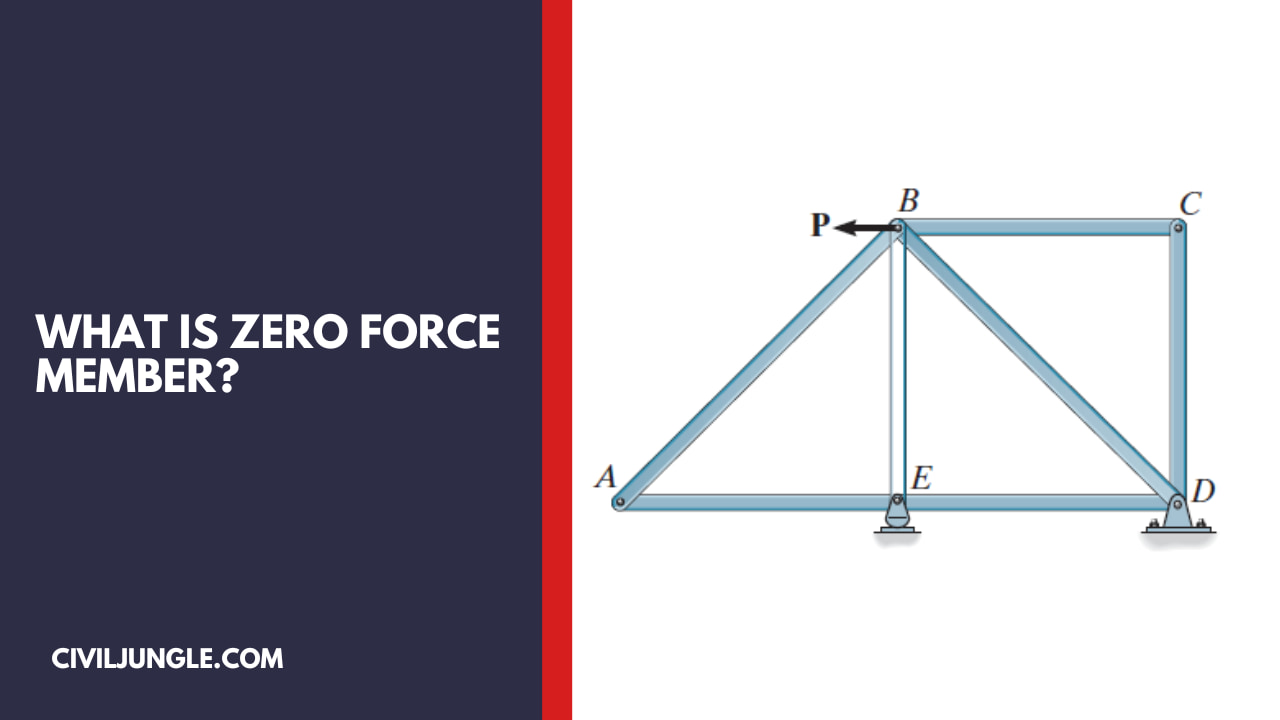


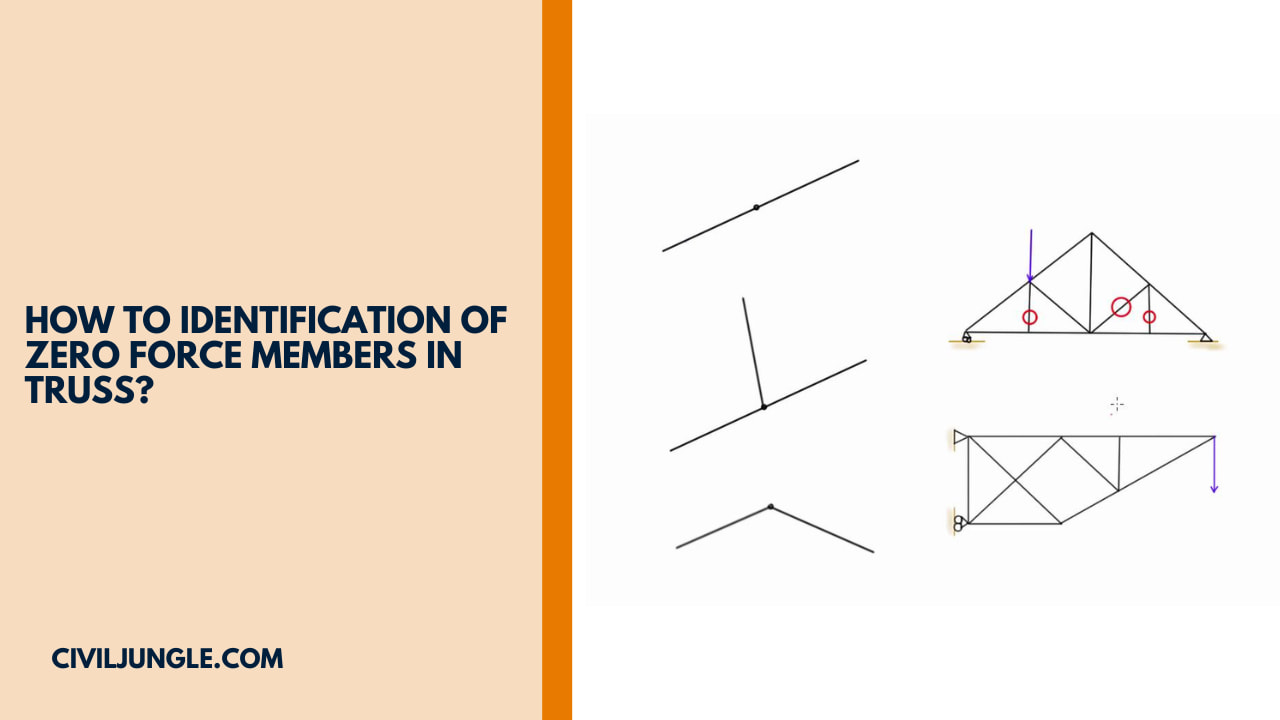
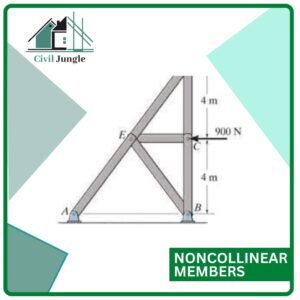
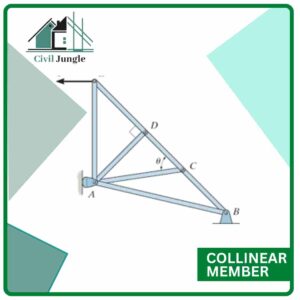

Leave a Reply